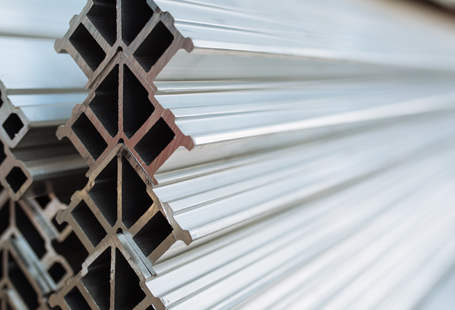CAPALEX will be closing for the Christmas Holidays 3:30pm Wednesday 24th December & our Sales Office will be reopening 9:00am Friday 2nd January 2026.
Merry Christmas and a Happy New Year from the CAPALEX TEAM!
CAPALEX will be closing for the Christmas Holidays 3:30pm Wednesday 24th December & our Sales Office will be reopening 9:00am Friday 2nd January 2026.
Merry Christmas and a Happy New Year from the CAPALEX TEAM!

1. Product and Company Identification
| Product Name: | Aluminium Alloy Extrusions |
| Synonyms, Trade Names: | All Aluminium alloys in the 1xxx – 7xxx series excluding those containing lead (2011 and 6262) |
| Applications: | Engineering |
| Supplier: | Capital Aluminium Extrusions Ltd, Cleator Moor, Cumbria, CA25 5QB, UK |
| Business/Emergency Telephone: | 01946 811771 |
| Facsimile: | 01946 813681 |
| Appearance & Odour: | Silver grey metallic solid, odourless |
2. Composition/Information on Ingredients
| Base Metal | Contents |
|---|---|
| Aluminium | 80 – 99.7% |
| Alloying Elements | |
| Copper | <10% |
| Magnesium | <10% |
| Zinc | <10% |
| Cobalt | <2% |
| Iron | <2% |
| Maganese | <2% |
| Silicon | <14% |
| Copper | <10% |
| Tin | <2% |
| Nickel | <2% |
| Chromium | <0.5% |
For more detailed composition, refer to the certificate of analysis, available on request.
3. Hazard Identification
Not regarded as a health hazard under current legislation as supplied.
Water/ humidity on metal that is added to a melting furnace can cause violent explosions. Preheat material and keep dry prior to charging into a furnace.
4. First Aid Measures
| Inhalation: | Not considered to be a health hazard as supplied. However, if dust or hot vapour is inhaled, move the exposed person to a well-ventilated area, rinse nose and mouth with water and provide rest and warmth. If discomfort persists, consult a physician. |
| Ingestion: | Not relevant |
| Skin Contact: | Not considered to be a health hazard as supplied. However, if hot metal comes into contact with skin, remove the affected person from source of contamination and rinse the skin with plenty of cold water. If burn is severe, consult a physician. |
| Eye contact: | Dust in the Eyes – remove any contact lenses and flush eyes thoroughly with water, taking care to rinse under eyelids. Continue flushing for at least 15 minutes. If discomfort persists, consult a physician. |
5. Fire Fighting Measures
| Extinguishing Media: | Not a fire hazard unless in particulate form. Suspensions of aluminium dust in air may pose a severe explosion hazard. A potential for explosion exists for a mixture of fine and coarse particles if at least 15-20% of the material is finer than 44 microns (325 mesh). Buffing and polishing generate finer material than grinding, sawing and cutting. In case of aluminium fires, use a class D dry powder extinguisher. Do NOT use water or halogenated extinguishing media. |
| Hazardous Combustion Products: | Not relevant |
6. Accidental Release Procedures
Recycle. Aluminium in the form of fine particulates may be reactive; its hazardous characteristics should be determined prior to disposal.
7. Handling and Storage
| Handling Precautions: | Because of the risk of explosion, aluminium alloy scrap must be thoroughly dried prior to remelting. Hot aluminium does not exhibit any warning colour change. Exercise great caution since the metal may be hot. Use standard techniques to check metal temperature prior to handling. Possibility of sharp edges – use protective gloves. |
| Storage Conditions: | Store in dry conditions away from any of the chemicals listed in Section 10. |
8. Exposure Controls and Personal Protection
Exposure Limits:
| Substance | Long Term Exposure Limit (8 hour TWA ref period) mg.m3 | Short Term Exposure Limit (15min.ref period) mg.m3 |
|---|---|---|
| Aluminium metal and oxides, respirable dust | 4 | - |
| Aluminium metal and oxides, total inhalable dust | 10 | - |
| Chromium | 0.5 | - |
| Copper, dusts & mists | 1 | 2 |
| Copper, fume | 0.5 | - |
| Magnesium oxide, fume & respirable dust | 4 | 10 |
| Manganese, fume | 1 | - |
| Nickel | 0.1 | - |
| Silicon, respirable dust | 4 | - |
| Silicon, total inhalable dust | 10 | - |
| Zinc oxide, fume | 5 | - |
Protection:
Use protective gloves. If dust is generated, use tight-fitting goggles and dust masks. If the level of nuisance dust exceeds 10mg/ m3, use respirators. Provide sufficient ventilation for operations causing dust formation.
9. Physical and Chemical Properties
| Appearance: | Metallic |
| Colour: | Silver grey |
| PH: | Not applicable |
| Boiling Point: | Not applicable |
| Melting Point: | 480–660°C |
| Vapour Pressure: | Not applicable |
| Vapour Density (Air=1): | Not applicable |
| Evaporation Rate: | Not applicable |
| Relative Density (Air=1) | >2.5-2.9 |
| Water Solubility: | Not applicable |
| Odour: | Odorless |
| Flashpoint: | Not applicable |
| Auto ignition Temperature: | Not applicable |
| Lower Flammable Limit: | Not applicable |
| Higher Flammable Limit: | Not applicable |
| Explosive Properties: | Not applicable |
| NFPA Fire Code: | 0 |
| Oxidising Properties: | Not applicable |
| Partition Coefficient (n-octanol/water) | Not applicable |
10. Stability and Reactivity
Stability: Stable
Conditions to avoid: In the form of particles, aluminium may explode when mixed with halogenated acids, halogenated solvents, bromates, iodates or ammonium nitrate. Aluminium particles on contact with copper, lead or iron oxides can react vigorously with release of heat if there is a source of ignition or intense heat.
Hazardous Decomposition: Aluminium, particularly in the form of particles, reacts with halogenated acids, water and caustic alkalis producing flammable hydrogen gas.
11. Toxicological Information
| Inhalation | Ingestion | Eye Contact | Skin Contact | Skin Absorption | |
|---|---|---|---|---|---|
| Routes of exposure: | Yes | No | Yes | Yes | No |
| Acute Effects: |
|
Not applicable | Irritation through mechanical abrasion | Contact with hot metal can cause burns | Not applicable |
Chronic Effects:
Ingestion and Inhalation:
High concentrations of manganese dust can affect the central nervous system (apathy, drowsiness, weakness and other symptoms resembling Parkinson’s disease.)
Medical Conditions Aggravated
By Exposure: Not determined
Carcinogenicity/Mutagenicity/
Reproductive Toxicity: Certain alloys of this series may contain chromium or nickel.
12. Ecological Information
Aluminium and its alloys under solid form do not present any hazard for the environment because metals are not biologically available.
13. Disposal Considerations
Recycle using appropriate precautions. Aluminium in the particulate form may be reactive, and its hazardous characteristics should be determined prior to disposal.
14. Transport Information
Dispose of waste in accordance with the Environmental Protection (Duty of Care) Regulations.
This product is not classified as dangerous under the transport regulations for road, rail, sea or air.
15. Regulatory Information
EC Classification:
Warning Symbol: None
Warning Word: None
Risk Phrases: None
Safety Phrases: None
16. Other Information
Revision: Original Issue
Reason for Change: Not applicable
References As indicated in the text above plus:
COSHH – Control of Substances Hazardous to Health Regulations
CHIP – Chemicals (Hazard Information and Packaging) Regulations
Although the information in this MSDS was obtained from sources, which we believe to be reliable, it cannot be guaranteed. In addition, this information may be used in a manner beyond our knowledge or control. It does not form a COSHH assessment.



 Capital Aluminium Extrusions Limited
Capital Aluminium Extrusions Limited